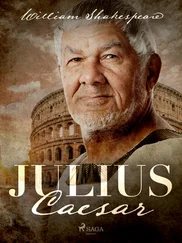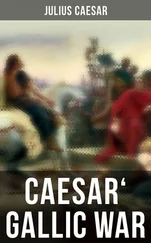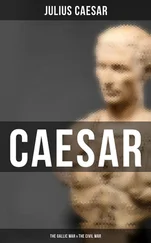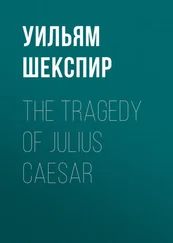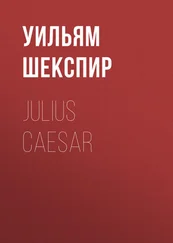Napoleon III - History of Julius Caesar Vol. 2 of 2
Здесь есть возможность читать онлайн «Napoleon III - History of Julius Caesar Vol. 2 of 2» — ознакомительный отрывок электронной книги совершенно бесплатно, а после прочтения отрывка купить полную версию. В некоторых случаях можно слушать аудио, скачать через торрент в формате fb2 и присутствует краткое содержание. Жанр: foreign_antique, foreign_prose, Биографии и Мемуары, на английском языке. Описание произведения, (предисловие) а так же отзывы посетителей доступны на портале библиотеки ЛибКат.
- Название:History of Julius Caesar Vol. 2 of 2
- Автор:
- Жанр:
- Год:неизвестен
- ISBN:нет данных
- Рейтинг книги:4 / 5. Голосов: 1
-
Избранное:Добавить в избранное
- Отзывы:
-
Ваша оценка:
- 80
- 1
- 2
- 3
- 4
- 5
History of Julius Caesar Vol. 2 of 2: краткое содержание, описание и аннотация
Предлагаем к чтению аннотацию, описание, краткое содержание или предисловие (зависит от того, что написал сам автор книги «History of Julius Caesar Vol. 2 of 2»). Если вы не нашли необходимую информацию о книге — напишите в комментариях, мы постараемся отыскать её.
History of Julius Caesar Vol. 2 of 2 — читать онлайн ознакомительный отрывок
Ниже представлен текст книги, разбитый по страницам. Система сохранения места последней прочитанной страницы, позволяет с удобством читать онлайн бесплатно книгу «History of Julius Caesar Vol. 2 of 2», без необходимости каждый раз заново искать на чём Вы остановились. Поставьте закладку, и сможете в любой момент перейти на страницу, на которой закончили чтение.
Интервал:
Закладка:
335
De Bello Gallico , V. 12.
336
De Bello Gallico , VI. 13.
337
Agricola , 11.
338
Strabo, IV., p. 199.
339
De Bello Gallico , V. 12.
340
Diodorus Siculus, V. 22.
341
Pliny, Hist. Nat. , IV. 30, § 16.
342
Tacitus, Agricola , 36.
343
De Bello Gallico , V. 16.
344
Tacitus, Agricola , 12.
345
Frontinus, Stratagm. , II. 3, 18. – Diodorus Siculus, V. 21. – Strabo, IV., p. 200.
346
The account on page 213 confirms this interpretation, which is conformable to that of General Gœler.
347
De Bello Gallico , IV. 32 and 33.
348
Strabo, IV., p. 200.
349
Strabo, IV., p. 201.
350
From what will be seen further on, each transport ship, on its return, contained 150 men. Eighty ships could thus transport 12,000 men, but since, reduced to sixty-eight, they were enough to carry back the whole army to the continent, they can only have carried 10,200 men, which was probably the effective force of the two legions. The eighteen ships appropriated to the cavalry might transport 450 horses, at the rate of twenty-five horses each ship.
351
The port of Dover extended formerly from the site of the present town, between the cliffs which border the valley of the Dour or of Charlton. ( See Plate 17. ) Indeed, from the facts furnished by ancient authors, and a geological examination of the ground, it appears certain that once the sea penetrated into the land, and formed a creek which occupied nearly the whole of the valley of Charlton. The words of Cæsar are just justified: “Cujus loci hæc erat natura, atque ita montibus angustis mare continebatur, uti ex locis superioribus in littus telum adjici posset.” (IV. 23.)
The proofs of the above assertion result from several facts related in different notices on the town of Dover. It is there said that in 1784 Sir Thomas Hyde Page caused a shaft to be sunk at a hundred yards from the shore, to ascertain the depth of the basin at a remote period; it proved that the ancient bed of the sea had been formerly thirty English feet below the present level of the high tide. In 1826, in sinking a well at a place called Dolphin Lane , they found, at a depth of twenty-one feet, a bed of mud resembling that of the present port, mixed with the bones of animals and fragments of leaves and roots. Similar detritus have been discovered in several parts of the valley. An ancient chronicler, named Darell, relates that “Wilbred, King of Kent, built in 700 the church of St. Martin, the ruins of which are still visible near the market-place, on the spot where formerly ships cast anchor.”
The town built under the Emperors Adrian and Septimus Severus occupied a part of the port, which had already been covered with sand; yet the sea still entered a considerable distance inland. ( See Plate 17. )
It would appear to have been about the year 950 that the old port was entirely blocked up with the maritime and fluvial alluvium which have been increasing till our day, and which at different periods have rendered it necessary to construct the dykes and quays which have given the port its present form.
352
“Constat enim aditus insulæ esse munitos mirificis molibus.” (Cicero, Epist. ad Atticum , IV. 16.)
353
Dio Cassius, XXXIX. 51.
354
The Emperor Julian (p. 70, edit. Lasius) makes Cæsar say that he had been the first to leap down from the ship.
355
It is in the text, in scopulum vicinum insulæ , which must be translated by “a rock near the isle of Britain,” and not, as certain authors have interpreted it, “a rock isolated from the continent.” (Valerius Maximus, III. ii. 23.) – In fact, these rocks, called Malms , are distinctly seen at low water opposite the arsenal and marine barracks at Deal.
356
Dio Cassius, XXXIX. 51.
357
Cæsar himself had only carried three servants with him, as Cotta relates. (Athenæus, Deipnosophist. , VI. 105.)
358
Dio Cassius, XXXIX. 53.
359
At the battle of Arcola, in 1796, twenty-five horsemen had a great influence on the issue of the day. ( Mémoires de Montholon, dictées de Sainte-Hélène, II. 9.)
360
De Bello Gallico , IV. 36 and 37.
361
De Bello Gallico , IV. 38.
362
Dio Cassius, XL. 1. – See Strabo, IV., p. 162, edit. Didot.
363
De Bello Gallico , V. I.
364
Dio Cassius, XXXIX. 56. XL. 1.
365
This opinion has been already supported by learned archæologists. I will cite especially M. Mariette; Mr. Thomas Lewin, who has written a very interesting account of Cæsar’s invasions of England; and lastly, M. l’Abbé Haigneré, archivist of Boulogne, who has collected the best documents on this question.
366
Strabo, IV. 6, p. 173.
367
According to the Itinerary of Antoninus, the road started from Bagacum ( Bavay ), and passed by Pons-Scaldis ( Escaut-Pont ), Turnacum ( Tournay ), Viroviacum ( Werwick ), Castellum ( Montcassel, Cassel ), Tarvenna ( Thérouanne ), and thence to Gesoriacum ( Boulogne ). According to Mariette, medals found on the road demonstrate that it had been made in the time of Agrippa; moreover, according to the same Itinerary of Antoninus, a Roman road started from Bavay, and, by Tongres, ended at the Rhine at Bonn. (See Jahrbücher des Vereins von Alterthums Freunden , Heft 37, Bonn, 1864. Now, admitting that there had been already under Augustus a road which united Boulogne with Bonn, we understand the expression of Florus, who explains that Drusus amended this road by constructing bridges on the numerous water-courses which it crossed, Bonnam et Gesoriacum pontibus junxit . (Florus, IV. 12.)
368
Suetonius, Caligula , 46. – The remains of the pharos of Caligula were still visible a century ago.
369
Suetonius, Claudius , 17.
370
Ammianus Marcellinus, XX. 1.
371
Ammianus Marcellinus, XX. 7, 8.
372
Eumenius, Panegyric of Constantinus Cæsar , 14.
373
Anglo-Saxon Chronicle, cited by Mr. Lewin.
374
“Qui tertia vigilia Morino solvisset a portu.” (Florus, III. 10.)
375
Strabo, IV. 5, p. 166.
376
“Ultimos Gallicarum gentium Morinos, nec portu quam Gesoriacum vocant quicquam notius habet.” (Pomponius Mela, III. 2.) – “Μορινὡν Γησοριακον ἑπἱνειον.” (Ptolemy, II. ix. 3.)
377
“Hæc [Britannia] abest a Gesoriaco Morinorum gentis litore proximo trajectu quinquaginta M.” (Pliny, Hist. Nat. , IV. 30.)
Читать дальшеИнтервал:
Закладка:
Похожие книги на «History of Julius Caesar Vol. 2 of 2»
Представляем Вашему вниманию похожие книги на «History of Julius Caesar Vol. 2 of 2» списком для выбора. Мы отобрали схожую по названию и смыслу литературу в надежде предоставить читателям больше вариантов отыскать новые, интересные, ещё непрочитанные произведения.
Обсуждение, отзывы о книге «History of Julius Caesar Vol. 2 of 2» и просто собственные мнения читателей. Оставьте ваши комментарии, напишите, что Вы думаете о произведении, его смысле или главных героях. Укажите что конкретно понравилось, а что нет, и почему Вы так считаете.



